Types of Fire Extinguisher Singapore
Under the Singapore Standards 578, the types of fire extinguisher in Singapore are the: Dry Powder Fire Extinguisher, Foam Fire Extinguisher, Wet Chemical Fire Extinguisher, Water Fire Extinguisher, Carbon Dioxide Fire Extinguisher and Clean Agent Fire Extinguisher
Contrary to popular belief, the type of fire extinguisher does not determine what fire classes it can eliminate. The fire class icons indicated on the fire extinguisher itself will determine the fire classes it can fight.
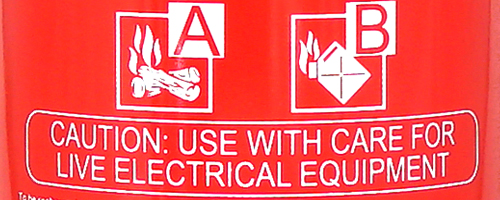
The manufacturer can only display the fire class the fire extinguisher has been tested for. So if the manufacturer has successfully tested the fire extinguisher on only Class A and Class B fires, they can only display the Class A and Class B icons.
Electrical and gas fires do not have a standardized test so you will never see electric or gas icons in the new fire extinguishers.
As an example, foam fire extinguishers can come in the following forms:
- Class A, Class B
- Class A, Class F
- Class A, Class B and Class F
- Class F only
This is why it is important to check which fire classes are on the instruction label before fighting a fire.
Dry Powder Fire Extinguisher
By far the most common fire extinguisher in Singapore, Dry Powder Fire Extinguishers are popular due to their high fire rating balanced by size. They are capable of eliminating common fire classes – Including Class A, Class B, Class C and electric fires. The dry powder fire extinguisher works by coating the fuel of the fire with a layer of very fine dry powder dust. This starves the fire of its fuel and oxygen, effectively putting it out. It is also safe for electrical fires as dry powder is a non-conductor of electricity.
The downside is that the same dry powder dust, due to its fine and light nature, makes clean up very difficult. The dry powder itself is highly corrosive if left alone and must immediately be cleaned up after the fire is extinguished. This makes it unsuitable for sensitive and expensive equipment. During the discharge of dry powder, the clouds of powder will obstruct vision. Using dry powder fire extinguisher also does not reduce the temperature of the fuel, which makes it possible for reignition to occur.
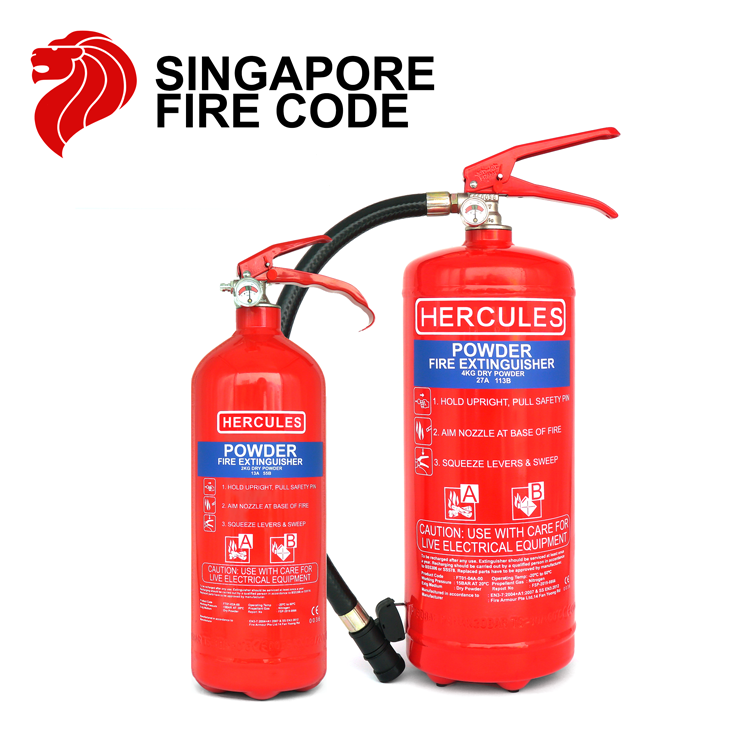
Foam Fire Extinguisher
As compared to dry powder fire extinguishers, they are superior in keeping fires from reigniting as the high water content of the foam helps to cool down the fuel of the fire. The bubble effect of the foam also creates an effective barrier to separate the oxygen from the fuel. However, foam fire extinguishers do not have a fire rating as high as that of dry powder fire extinguishers.
During fire fighting, foam fire extinguishers allow the operator to have crystal clear vision. As a result, using a foam fire extinguisher to fight fires will not obstruct rescue operations.
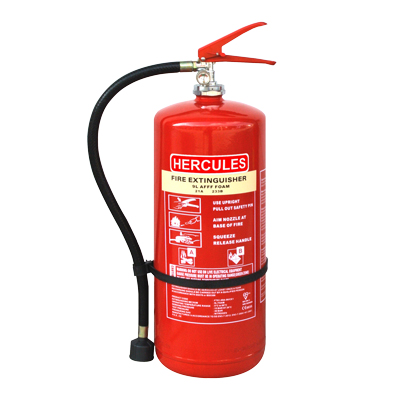
Wet Chemical Fire Extinguisher
Kitchen fire extinguishers use wet chemical which is also a type of fire fighting foam.
The main difference between wet chemical and the usual fire fighting foam is that the wet chemical agent chemically reacts with the grease or animal fats from cooking oil to form a foamy soap.
In kitchen fire extinguishers. The specialized nozzles create a very fine mist which will not cause the kitchen fires to suddenly expand. The wet chemical foam itself has a even higher fire fighting ability than standard foam when it comes to kitchen fires.
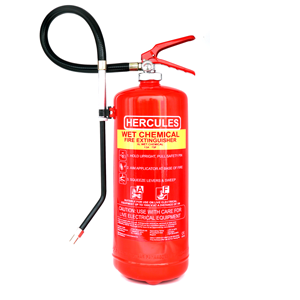
Carbon Dioxide Fire Extinguisher
Carbon dioxide fire extinguishers work by starving the fire of its oxygen and cooling the fuel. As a result, they have a class B fire rating for flammable liquids.
Upon discharge, carbon dioxide fire extinguishers do not leave any residue. As such, it can be considered as a clean agent. As such, Carbon dioxide fire extinguishers are usually seen in server rooms or electrical stations. They make a cost efficient solution to fire fighting whilst not damaging sensitive or electrical equipment.
However, carbon dioxide fire extinguishers are highly pressurized at approximately 55 bar. By comparison, dry powder fire extinguisher’s are pressurised to 12-16 Bar. During discharge, the carbon dioxide is capable of causing frostbite. So, great caution is needed in its storage and operation.
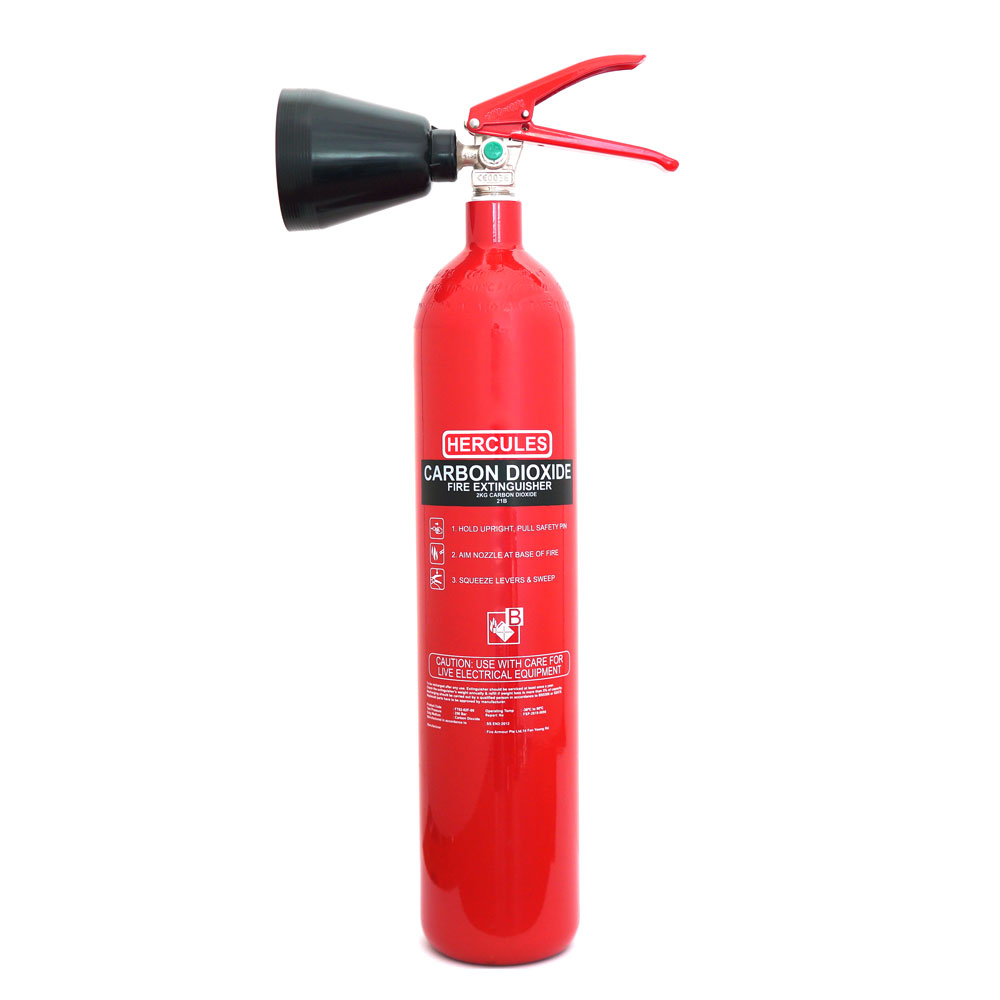
Clean Agent Fire Extinguisher
The Singapore Standards define clean agent as electrically non-conducting, volatile or gaseous, fire extinguishing medium that does not leave a residue upon evaporation. Clean agent fire extinguishers work by both cooling and decreasing the percentage of oxygen near the fire. In effect, clean agent fire fighting agents truly shine in fire suppression systems of a sealed room. In an open air scenario, they do not fare as well as their powder or foam counterparts.
In 1992, Singapore became a party to Montreal Protocol. As a result, Singapore has prohibited the use of halons in new fire protection systems. Import of fire extinguishers containing halons since 1994 has been prohibited. Singapore only allows the import of recycled halons for fire suppression in critical applications such as aircrafts. This is subject to the approval by the relevant authority.
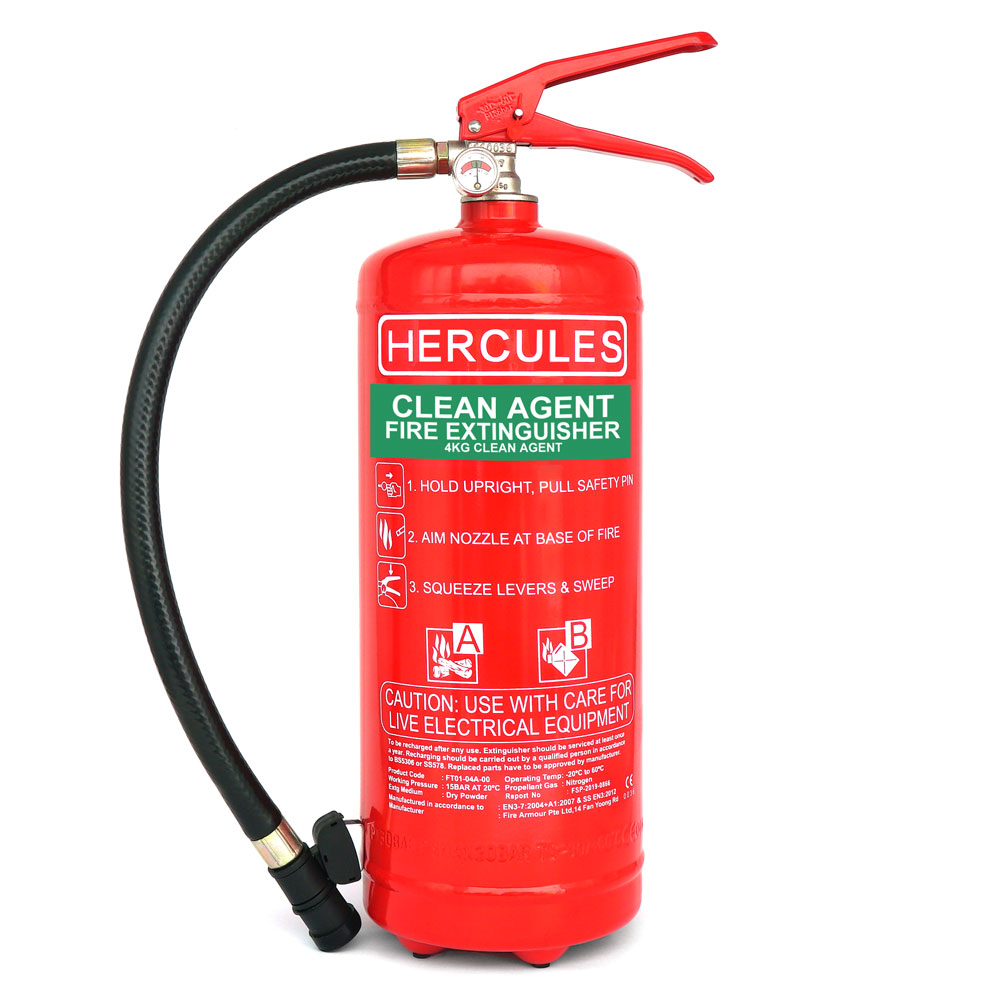
Water Fire Extinguisher
Amongst all the types of fire extinguisher, fire extinguishers that use only water as a fire fighting agent have seen a great decrease in use. Water based fire extinguisher work by reducing the temperature of fuels to below ignition point. Effectively, they are only capable of putting out Class A fires which make them not so desirable.
When asked for recommendations, we suggest to use foam fire extinguishers. Comparatively, foam is superior in fire rating and can also fight class B flammable liquid fires and class F kitchen fires.
